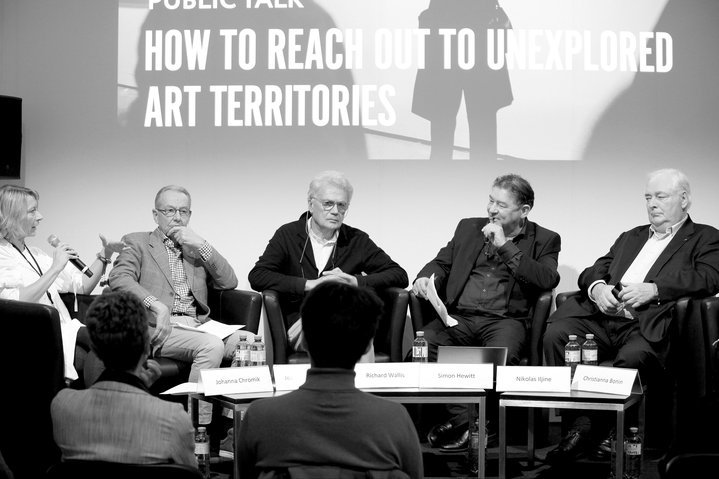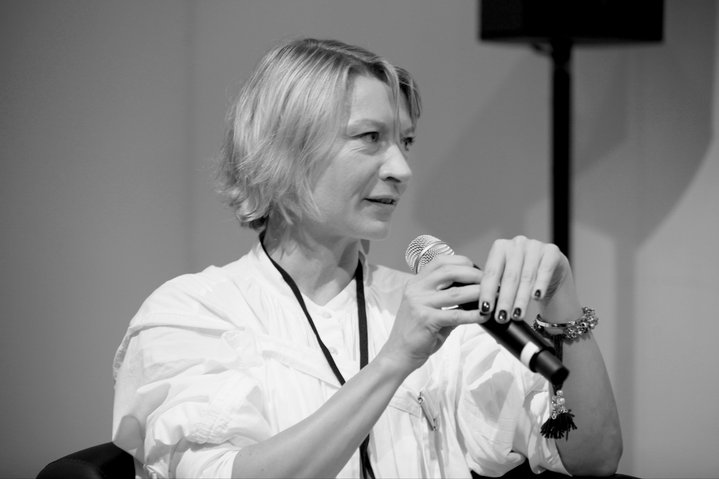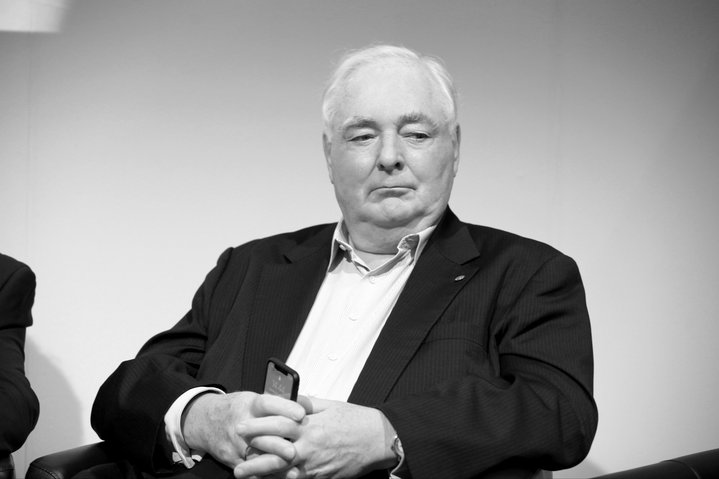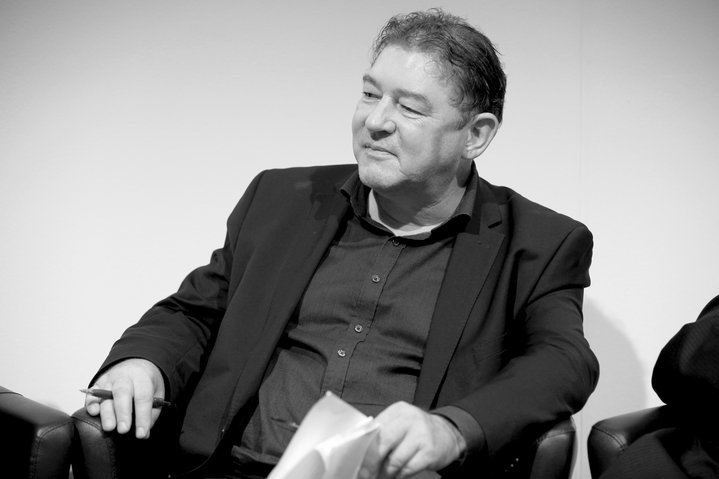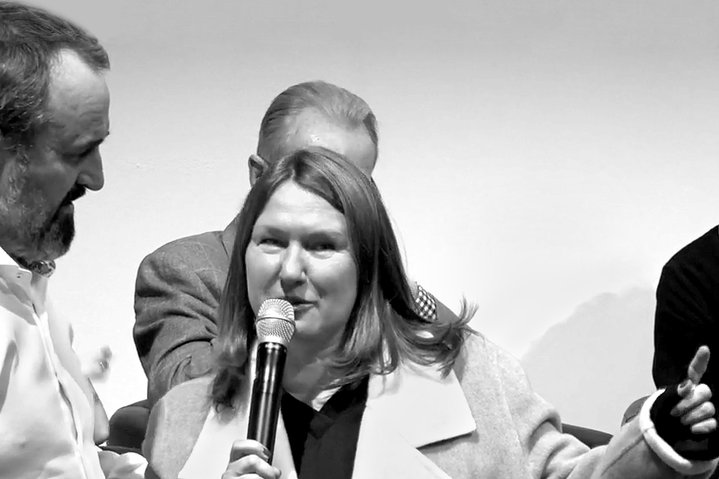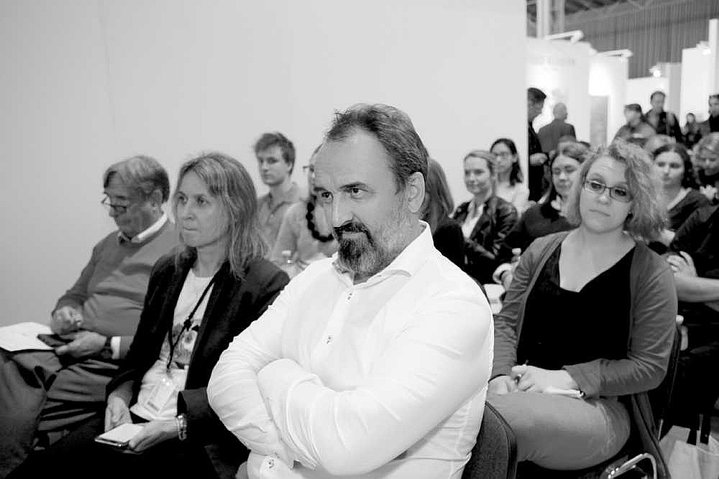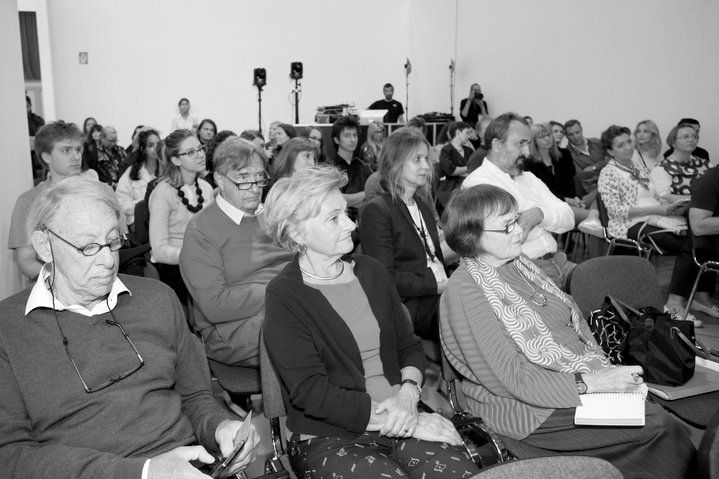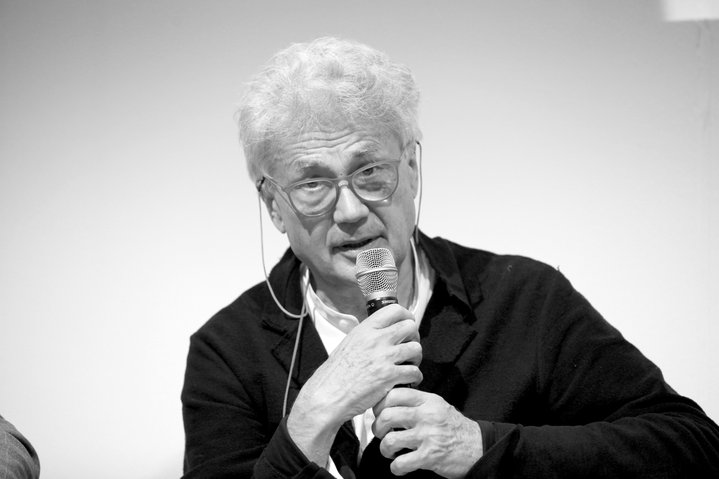Facing the unknown: Russian Art Focus's public talk in Vienna

During the panel organized by our publication at viennacontemporary, curators, art critics and gallerists discussed how to integrate post-Soviet art in the global art scene.
In late September, the artsy jet set from all over Europe flocked to Austria for its biggest contemporary art fair. Viennacontemporary, with 110 participating galleries from 26 countries, is mostly focused on Central and Eastern European art. That’s why the public talk organized by Russian Art Focus, “How to reach out to unexplored art territories?” (part of the fair’s Culture 5.0 conference), was relevant for both visitors and organizers. It is no secret that the art scene of the former USSR still remains terra incognita for most Western collectors and art professionals. Curator and art historian Jean-Hubert Martin, art critic Simon Hewitt, the fair’s artistic director Johanna Chromik, and Nicolas V. Iljine, advisor to the State Hermitage museum’s general director, were invited to speak on the subject. The talk was moderated by the Russian Art Focus Editor-in-Chief Richard Wallis and art critic Christianna Bonin.
Speaking of art institutions' role in re-contextualizing non-European cultures, Jean-Hubert Martin noted: “The main problem with major museums, such as the Centre Pompidou, the Tate or MoMA in New York, is that they are extremely timid and tend to more or less follow the market. It has taken 30 years for some African artists to be shown there.” He predicted the same will happen to the artists of the Central Asian republics. Martin pointed out how important it is for curators to dismiss prejudices. The difference between art and craft, for instance, does not exist in many cultures; rather, that division is imposed on them by Western experts. “We need a new approach to other cultures to understand how they function,” he admitted.
The subject of institutional and government support for increasing worldwide visibility of national art provoked a heated discussion. Simon Hewitt noted that in Central Asia, governments mostly use such support for propaganda purposes. At the same time, Baltic countries like Estonia often cover galleries’ expenses when they take part in international art fairs, giving them an unfair advantage over their competitors from other countries. Johanna Chromik retorted that many European countries such as Austria and Slovenia provide such support to their galleries when they go to prestigious art fairs such as Art Basel or Frieze London.
Sergei Popov, the founder of Moscow’s pop/off/art gallery, maintained that the only way to overcome the colonial approach of Western curators and institutions to the ex-Soviet republics and countries of the former Eastern bloc is to develop connections among these countries themselves. “It is very interesting to learn what Kazakh artists think of Georgian artists or how Ukrainians view the Baltic art scene. Interchanges between these countries are very important.”
He stressed that the growth of the market alone is not enough: a colonial approach will persist until political institutions are well developed in these countries. “In Russia as well as in Central Asian republics, we don’t even have a law against domestic violence: that makes us ‘wild’ in the eyes of the civilised world. This problem transfers directly to the art world,” he said.
Another Moscow art dealer, Ekatherina Iragui, added that in Russia, galleries have to educate the public, which has no tradition of collecting — a pastime considered "bourgeois" and therefore reprehensible during the Soviet era. In Russia, she noted, intellectuals in big cities actively oppose the government, resulting in more and more interest in contemporary art. “It’s inevitable and it’s our way to democracy. I view my work almost as civil engagement. Contemporary art is about multiple opinions, diversity and accepting differences,” she stated.
Finally, Rita Janssen, member of the diplomatic advisory board of the BOZAR art centre in Brussels, noted that the very habit of defining the countries stretching from the Baltics to Central Asia as "Post-Soviet" should be forgotten, since these countries had their own rich cultural traditions long before becoming parts of the USSR.






